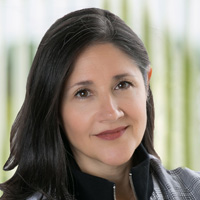5 Charitable Surprises about High-Net-Worth Families
They might be out of the spotlight, but smaller family foundations are stepping up their giving in this time of need.


Family philanthropy is a key driver of social change and a great way for high-net-worth (HNW) families to clarify their values, commit to a mission and work collaboratively across generations to build and protect their legacies.
We recently analyzed the grantmaking activities of more than 1,000 private foundations over the past 24 months to understand how and where wealthy families are focusing their giving. Our findings provide a benchmark for affluent philanthropists and the advisers who support them.
Here are our top five discoveries about HNW donors:
From just $107.88 $24.99 for Kiplinger Personal Finance
Become a smarter, better informed investor. Subscribe from just $107.88 $24.99, plus get up to 4 Special Issues

Sign up for Kiplinger’s Free Newsletters
Profit and prosper with the best of expert advice on investing, taxes, retirement, personal finance and more - straight to your e-mail.
Profit and prosper with the best of expert advice - straight to your e-mail.
They don’t just give the minimum
If you think affluent families only use their foundations to park assets and get tax benefits, think again. While foundations are required to give away 5% of their assets every year, those in our research sample gave away an average of 7.4% – a trend that has been constant in the 12 years we’ve conducted this analysis. Even more impressive, the smaller foundations, or those with less than $1 million in assets, were the biggest heroes in 2020: They gave an average of 15% of their assets.
They’re increasingly generous
The foundations we studied collectively funded approximately 1,000 more grants and dispersed $15 million more in 2020 than in 2019, an average of $339,032 per foundation. They also doubled their grants to individuals (GTIs), a giving capability unique to private foundations that enables donors to issue emergency funding directly to people in need instead of granting to a public charity.
They will answer the call
Judging from their actions in 2020, foundation donors will move swiftly to help in times of urgent need. After the United States declared a national emergency in March 2020 due to COVID-19, foundations nearly doubled their year-over-year grant volume in April from 5.6% to 9.7% of total activity. They also increased their giving to human services and public/societal benefits charities, which experienced the highest year-over-year increases of all the charitable sectors tracked.
Additionally, the dollars that donors granted to charity exceeded the funds they invested in their foundations for only the second time in 20 years (the first being in 2019), demonstrating a pronounced commitment to philanthropy during a time of heightened need.
They're loosening the reins on how their dollars are spent
Typically, philanthropists carefully define how they want their foundation dollars to be used by issuing “specific-purpose” grants. However, as they endeavored to meet the onslaught of urgent need in 2020, they eased their restrictions and gave more “general purpose” grants to afford charities maximum flexibility in how to use the funding. At 46% of all grants in 2020, it’s the most balanced split we’ve seen since 2010 when general purpose grants represented just 32% of giving.
Their resources are growing
Foundation endowments experienced double-digit growth in both 2020 and 2019, helping to fund the 2020 increase in grants and set the stage for future giving. Part of the growth was fueled by investment returns (roughly 55% of endowment assets are allocated to equities) and part was a factor of new contributions from funders who replenished an average of 57 cents for every 83 cents they disbursed in grants and expenses – a sure sign of ongoing charitable intent.
Despite the headlines that are given to megadonors, such as the Gates Foundation and the Ford Foundation, 98% of the roughly 100,000 private foundations in the U.S. have endowments of less than $50 million and 63% have less than $1 million. Great work is being fueled by people out of the spotlight who are quietly and persistently pursuing their philanthropic missions and effecting change.
To view our full study on HNW giving, visit here.
Profit and prosper with the best of Kiplinger's advice on investing, taxes, retirement, personal finance and much more. Delivered daily. Enter your email in the box and click Sign Me Up.

Hannah Shaw Grove is the chief marketing officer of Foundation Source, founder of "Private Wealth" magazine and author of 11 data-based books and hundreds of reports and articles on topics relating to the creation, management, disposition and transfer of wealth. Hannah has previously been the chief marketing officer at Apex Clearing, iCapital Network and Merrill Lynch Investment Managers and is a cum laude graduate of Harvard University. She holds the FINRA Series 6, 7, 24, 26 and 63 licenses.
-
 I'm want to give my 3 grandkids $5K each for Christmas.
I'm want to give my 3 grandkids $5K each for Christmas.You're comfortably retired and want to give your grandkids a big Christmas check, but their parents are worried they might spend it all. We ask the pros for help.
-
 If You're Not Doing Roth Conversions, You Need to Read This
If You're Not Doing Roth Conversions, You Need to Read ThisRoth conversions and other Roth strategies can be complex, but don't dismiss these tax planning tools outright. They could really work for you and your heirs.
-
 Could Traditional Retirement Expectations Be Killing Us?
Could Traditional Retirement Expectations Be Killing Us?A retirement psychologist makes the case: A fulfilling retirement begins with a blueprint for living, rather than simply the accumulation of a large nest egg.
-
 I'm a Financial Planner: If You're Not Doing Roth Conversions, You Need to Read This
I'm a Financial Planner: If You're Not Doing Roth Conversions, You Need to Read ThisRoth conversions and other Roth strategies can be complex, but don't dismiss these tax planning tools outright. They could really work for you and your heirs.
-
 Could Traditional Retirement Expectations Be Killing Us? A Retirement Psychologist Makes the Case
Could Traditional Retirement Expectations Be Killing Us? A Retirement Psychologist Makes the CaseA retirement psychologist makes the case: A fulfilling retirement begins with a blueprint for living, rather than simply the accumulation of a large nest egg.
-
 I'm a Financial Adviser: This Is How You Can Adapt to Social Security Uncertainty
I'm a Financial Adviser: This Is How You Can Adapt to Social Security UncertaintyRather than letting the unknowns make you anxious, focus on building a flexible income strategy that can adapt to possible future Social Security changes.
-
 I'm a Financial Planner for Millionaires: Here's How to Give Your Kids Cash Gifts Without Triggering IRS Paperwork
I'm a Financial Planner for Millionaires: Here's How to Give Your Kids Cash Gifts Without Triggering IRS PaperworkMost people can gift large sums without paying tax or filing a return, especially by structuring gifts across two tax years or splitting gifts with a spouse.
-
 'Boomer Candy' Investments Might Seem Sweet, But They Can Have a Sour Aftertaste
'Boomer Candy' Investments Might Seem Sweet, But They Can Have a Sour AftertasteProducts such as index annuities, structured notes and buffered ETFs might seem appealing, but sometimes they can rob you of flexibility and trap your capital.
-
 Quick Question: Are You Planning for a 20-Year Retirement or a 30-Year Retirement?
Quick Question: Are You Planning for a 20-Year Retirement or a 30-Year Retirement?You probably should be planning for a much longer retirement than you are. To avoid running out of retirement savings, you really need to make a plan.
-
 Don't Get Caught by the Medicare Tax Torpedo: A Retirement Expert's Tips to Steer Clear
Don't Get Caught by the Medicare Tax Torpedo: A Retirement Expert's Tips to Steer ClearBetter beware, because if you go even $1 over an important income threshold, your Medicare premiums could rise exponentially due to IRMAA surcharges.
-
 I'm an Insurance Pro: Going Without Life Insurance Is Like Driving Without a Seat Belt Because You Don't Plan to Crash
I'm an Insurance Pro: Going Without Life Insurance Is Like Driving Without a Seat Belt Because You Don't Plan to CrashLife insurance is that boring-but-crucial thing you really need to get now so that your family doesn't have to launch a GoFundMe when you're gone.